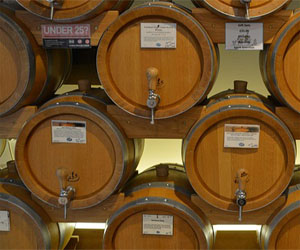


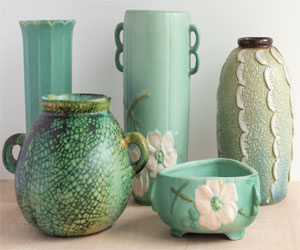
Pottery, with its ancient origins and enduring allure, is a craft that relies on a wide array of techniques to shape and transform clay into functional and artistic objects. From handbuilding to wheel-throwing, and from glazing to firing, pottery techniques are the heart and soul of this ancient art form. Let's delve into the world of pottery techniques, where creativity and craftsmanship come together.
Handbuilding: Handbuilding is one of the most fundamental and versatile techniques in pottery. It involves using the hands to shape the clay. This can be done through techniques such as pinching, coiling, and slab-building. Pinching entails squeezing and forming the clay, coiling is the process of building up the form with clay ropes, and slab-building involves using flattened sheets of clay to construct objects. Handbuilding allows for a great deal of artistic expression and often results in unique, irregular forms.
Wheel-Throwing: Wheel-throwing, or throwing, is a technique where the potter shapes clay on a rotating wheel. The wheel's motion allows for even and symmetrical forms, making it ideal for creating functional items like bowls, cups, and vases. Potters use their hands and various tools to manipulate the clay as it spins, drawing upon their skill and precision to achieve the desired shape and texture.
Coiling: Coiling is a method where clay ropes or coils are stacked and joined together to create a three-dimensional form. It is one of the oldest pottery techniques, with historical examples dating back thousands of years. Coiling provides both strength and flexibility, making it suitable for constructing larger vessels and sculptural pieces.
Slab-Building: Slab-building entails rolling out flat sheets of clay and cutting them into shapes that are assembled to create an object. It allows for the creation of more geometric and angular forms. Artists can also add texture and design elements to the slabs before assembly, resulting in visually striking pottery.
Glazing: Glazing is a technique that adds color, texture, and protection to pottery. Glazes are made from various materials, including minerals and chemicals, and are applied to the pottery before firing. The firing process transforms the glaze into a glassy surface, which can range from glossy to matte and from translucent to opaque. Glazing enhances the aesthetic appeal of pottery while also making it more durable and functional.
Firing: Firing is the final step in the pottery process, and it involves heating the clay to high temperatures in a kiln. The two main types of firing are bisque firing and glaze firing. Bisque firing hardens the clay and prepares it for glazing, while glaze firing melts and fuses the glaze to the pottery. The firing process can vary in temperature, duration, and atmosphere, allowing for a wide range of results, including stoneware, porcelain, and earthenware.
Raku And Pit Firing: In addition to traditional firing techniques, some potters explore alternative methods like raku and pit firing. Raku firing is known for its unpredictability and often results in striking, one-of-a-kind pieces with crackled glazes and smoky, darkened surfaces. Pit firing involves burying pottery in a pit with combustible materials and firing it in an open flame. This ancient technique yields unique and earthy finishes on the clay.
Pottery techniques are a dynamic and evolving aspect of this timeless art form. They provide artists with the tools and methods to bring their creative visions to life. Whether preserving traditional methods or pioneering innovative approaches, pottery techniques continue to enrich the world of ceramics with a diverse array of beautiful and functional objects.
An Artistic Masterpiece In Thread
 Versatility In Design: One of the satin stitch's most appealing features is its versatility. It can be used to create a wide range of designs, from simple geometric shapes to intricate, lifelike images. Whether you are working on floral motifs, animal figures, or abstract patterns, the satin stitch allows for artistic expression in various forms.
Versatility In Design: One of the satin stitch's most appealing features is its versatility. It can be used to create a wide range of designs, from simple geometric shapes to intricate, lifelike images. Whether you are working on floral motifs, animal figures, or abstract patterns, the satin stitch allows for artistic expression in various forms.
Achieving Dimension And Texture: While the satin stitch is celebrated for its smoothness, it also has the potential to add dimension and texture to embroidery projects. By altering the stitch length or layering stitches in different directions, artists can create the illusion of depth and detail, bringing designs to life.
The Importance Of Thread Selection: Thread selection is crucial when using the satin stitch. Traditional satin stitch threads include silk and rayon due to their sheen and luster. Modern options also include polyester threads that are known for their durability and colorfastness.
Creativity, Skill, And Personal Fulfillment
 Limitless Creativity: Woodworking projects provide a platform for limitless creativity. From crafting custom furniture pieces that blend seamlessly with your home's decor to designing unique wooden sculptures that captivate the imagination, there are no boundaries when it comes to the artistic possibilities. Woodworkers have the privilege of transforming their ideas and visions into tangible forms, resulting in projects that reflect their own unique style and personality.
Limitless Creativity: Woodworking projects provide a platform for limitless creativity. From crafting custom furniture pieces that blend seamlessly with your home's decor to designing unique wooden sculptures that captivate the imagination, there are no boundaries when it comes to the artistic possibilities. Woodworkers have the privilege of transforming their ideas and visions into tangible forms, resulting in projects that reflect their own unique style and personality.
Crafting Beauty With Thread
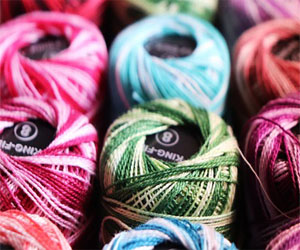 Exploring The Rich World Of Decorative Stitching: Decorative stitching encompasses a wide array of techniques, each offering a unique way to embellish and beautify fabrics. While the art of sewing often serves a functional purpose, decorative stitching goes beyond utility to infuse items with a touch of artistic flair.
Exploring The Rich World Of Decorative Stitching: Decorative stitching encompasses a wide array of techniques, each offering a unique way to embellish and beautify fabrics. While the art of sewing often serves a functional purpose, decorative stitching goes beyond utility to infuse items with a touch of artistic flair.
Embroidery: The Timeless Embellishment
Embroidery is one of the most celebrated forms of decorative stitching. This intricate craft involves the use of various stitches, threads, and colors to create patterns, designs, and images on fabric. Whether it's delicate floral motifs, intricate lacework, or intricate monograms, embroidery adds a personal and artistic touch to everything from clothing to home furnishings.
Quilting: Stitching Stories In Fabric
Quilting is another form of decorative stitching that marries functionality with artistic expression. Quilters use stitches to join layers of fabric and create intricate designs that often narrate stories or reflect cultural traditions. From patchwork quilts to intricately stitched bedspreads, quilting is a testament to both creativity and craftsmanship.
The Art Of Creative Upcycling
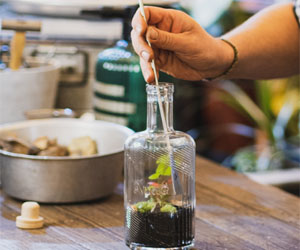 Inspiration And Community
Inspiration And Community
Trash to treasure often inspires others to embrace their creativity and sustainability. There are numerous online communities, social media groups, and DIY websites dedicated to upcycling. These platforms provide opportunities to share your projects, gain insights, and connect with like-minded individuals who share a passion for creative reuse.
Getting Started With Upcycling
Start Small: If you're new to upcycling, begin with small, manageable projects. Repurposing an old picture frame or transforming a piece of clothing can be a great starting point.
Gather Supplies: Depending on your chosen project, collect the necessary supplies, which may include tools, paint, glue, or other materials.
Seek Inspiration: Look for inspiration in books, magazines, online platforms, and by observing the work of other upcyclers.
Learn Techniques: Familiarize yourself with upcycling techniques and methods. Learning how to properly clean, repair, or transform items is essential for successful projects.
Take Safety Precautions: Depending on your project, be aware of safety precautions. When working with tools, chemicals, or heavy materials, safety should be a top priority.
The art of turning trash into treasure is not only a sustainable and environmentally responsible practice but also a creative and economical endeavor. Whether you're a seasoned upcycler or new to the world of creative reuse, there are always opportunities to transform discarded items into valuable and beautiful treasures. As you embark on your upcycling journey, you'll discover the joy of creating something unique, contributing to a greener planet, and embracing a more resourceful and imaginative way of life.
From Seed To Harvest
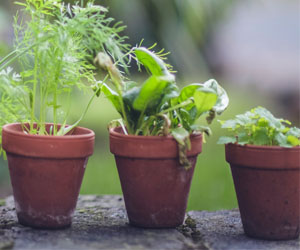 Soil Preparation
Soil Preparation
Prepare the soil by ensuring it is well-draining and rich in organic matter. Herbs generally prefer slightly alkaline soil with good aeration. To improve soil quality, incorporate compost or well-rotted organic matter.
Planting Techniques
When planting herbs, pay attention to spacing. Different herbs have varying requirements for space between plants. Proper spacing allows air circulation and minimizes the risk of disease.
Watering And Drainage
Watering is a critical aspect of herb growing. Most herbs prefer well-drained soil, so avoid overwatering, which can lead to root rot. Water deeply but less frequently, allowing the soil to dry out between watering sessions.
Sunlight Requirements
Herbs love sunlight, so make sure your garden receives at least 6 to 8 hours of direct sunlight per day. If you're growing herbs indoors, consider providing supplemental light with grow lights.
Pruning And Pinching
Regular pruning and pinching are key techniques for encouraging bushier growth and better flavor. Pinching the tips of the branches or cutting back leggy growth can stimulate new growth and prevent the herbs from becoming too woody.
Pest Management
Herbs are generally hardy, but they can still fall victim to pests and diseases. Consider natural pest control methods like companion planting or introducing beneficial insects like ladybugs. Inspect your plants regularly and address issues promptly.
A Time-Honored Craft That Endures
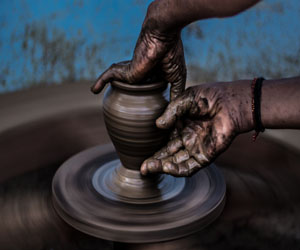 Techniques And Materials: Traditional pottery is characterized by a profound connection between the potter and the materials. Typically, it involves handbuilding techniques such as coiling, pinching, and slab-building, as well as the use of locally sourced clay and other natural materials. The techniques and materials used are often passed down through generations, preserving the authenticity and heritage of each style.
Techniques And Materials: Traditional pottery is characterized by a profound connection between the potter and the materials. Typically, it involves handbuilding techniques such as coiling, pinching, and slab-building, as well as the use of locally sourced clay and other natural materials. The techniques and materials used are often passed down through generations, preserving the authenticity and heritage of each style.
Regional Variations: One of the most compelling aspects of traditional pottery is its regional diversity. Different cultures have developed their own unique styles, forms, and designs. For example, the delicate blue and white porcelain of China is world-famous, while the intricately painted talavera ceramics of Mexico are celebrated for their vibrant patterns. Native American tribes have their distinctive pottery traditions, often incorporating symbolism and motifs reflecting their cultural heritage.
Cultural Significance: Traditional pottery is not just a craft; it is a reflection of cultural identity and history. Many traditional pottery forms have spiritual, ceremonial, or ritualistic importance within their respective cultures. In Native American Pueblo communities, for instance, pottery is often used in religious ceremonies, and the designs have deep cultural significance. In Japan, the tea ceremony is closely tied to the creation and appreciation of traditional pottery, such as the iconic Raku ware.
Preservation Of Craftsmanship: One of the most significant contributions of traditional pottery is its role in preserving craftsmanship. Potters who create traditional pottery often use age-old techniques that are passed down from master to apprentice. The continuation of these traditions ensures the perpetuation of valuable skills and techniques, safeguarding the art for future generations.